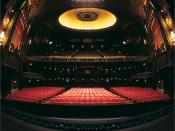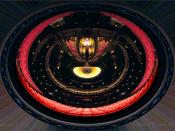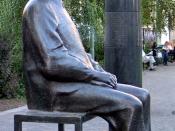Brecht's Epic Theatre was a break from the prevailing form of theatre - what Brecht called Dramatic Theatre. Epic theatre was a clearly different type of theatre and Brecht sought to make it popular - taking emphasis away from the dramatic theatre that he hated so. He truly believed that naturalism was unrealistic, as it created an ineffective barrier between the actors and the audience - a fourth wall -that made naturalistic theatre suggestive, not questioning. By defining his epic theatre he created a way to make watching plays a learning experience:
"Today when human character must be understood as the 'totality of all social conditions' the epic form is the only one that can comprehend all the processes, which could serve the drama as materials for a fully representative picture of the world."
Brecht wanted his Epic theatre to challenge the theatre of illusion that naturalism created. He wanted his audience to be alert and awake and to leave the auditorium with a challenge: to try and find the answers that his plays posed.
He was so determined that his style of theatre shouldn't be just entertainment that he went to extraordinary measures. In the performances of 'Drums In The Night' banners were placed in the auditorium, which said, "stop that romantic staring" and "every man is best in his own skin". This was to de-romanticise the act of watching - the audience were supposed to observe, not fall into illusion. It was so effective that a critic remarked: "Overnight the 24-year-old poet Bert Brecht has changed the literary face of Germany." Another effect he used to create the observing of the audience was to use a narrator to break up the action. For example in 'The Caucasian Chalk Circle' a narrator is used. This served to distance the...



Brecht's theater
great examples...great ideas that reflect upon who Brecht was and what were his intentions...your explanations expand to a great detail..good effort
0 out of 0 people found this comment useful.